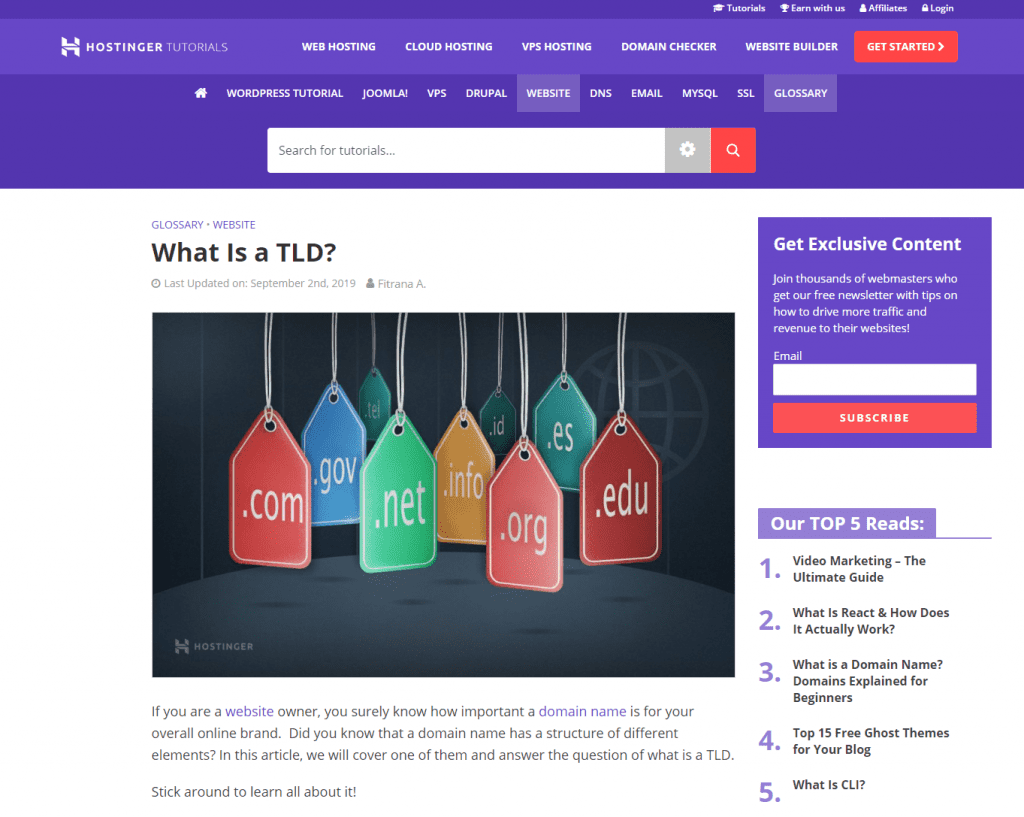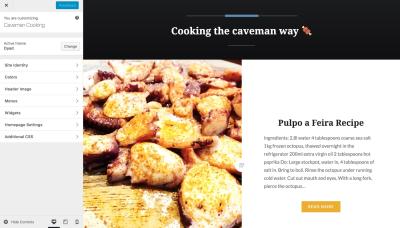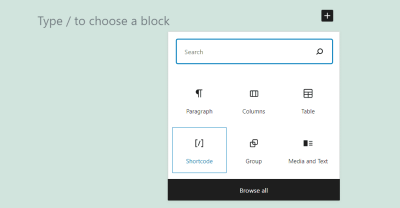Have you ever scrolled through a website and paused just a moment longer on a post with eye-catching images? That’s the power of a well-chosen featured image! On WordPress, these images are more than just visual appeal—they help tell your story, boost engagement, and even improve your SEO. A striking featured image can draw visitors in, giving them a sneak peek of what’s inside and encouraging them to click. Whether you’re a blogger, a business owner, or a creative, understanding how to select and craft the perfect featured image can make a big difference in how your website is perceived and how effectively it connects with your audience.
Popular Creative Ideas for Featured Images on Your Website

Ready to jazz up your WordPress site with some fresh, creative featured images? The good news is, there are countless ways to make your images stand out and resonate with your audience. Here are some popular ideas to get your creative juices flowing:
- Custom Illustrations and Graphics: Instead of stock photos, create or commission unique illustrations that match your brand style. These add personality and make your posts instantly recognizable.
- Bold Typography: Use striking typography over a simple background to convey the main message or theme of your content. This minimalist approach can be very effective, especially for quotes or announcements.
- Before-and-After Comparisons: Perfect for tutorials, renovation projects, or product showcases. Split the image into two halves to visually demonstrate transformation or progress.
- Collage or Mosaic Layouts: Combine multiple images into a single, cohesive collage. This works well for event recaps, portfolio showcases, or thematic collections.
- Nature and Lifestyle Photography: Use high-quality photos capturing real-life moments, landscapes, or products in natural settings. Authentic images create an emotional connection.
- Animated GIFs or Short Videos: Add movement with subtle animations or looping videos embedded as your featured image. This grabs attention and adds a dynamic element to your site.
- Minimalist and Abstract Art: Sometimes, less is more. Abstract shapes, patterns, or minimalist designs can evoke curiosity and fit modern aesthetics.
Remember, the key is to align your featured images with your brand identity and the message you want to convey. Play around with these ideas, experiment with tools like Canva or Adobe Spark, and don’t be afraid to think outside the box. Your website’s visuals are a powerful tool—make them work for you!
3. Tips for Choosing the Right Featured Images for Your Content

Picking the perfect featured image isn’t just about making your post look pretty — it’s about capturing attention, setting the tone, and giving your readers a sneak peek into what they can expect. Here are some friendly tips to help you choose images that truly enhance your content:
Understand Your Audience
First things first, think about who’s reading your blog. Are they professionals, students, hobbyists? An image that resonates with your target audience can make a big difference. For example, if your readers are tech enthusiasts, sleek and modern visuals work well. If you’re writing about gardening, vibrant, nature-inspired images will connect better.
Match the Image to Your Content
The featured image should act as a visual summary of your post. If your article is about healthy recipes, showcase a mouth-watering dish. For travel stories, a stunning landscape works wonders. The goal is to give your audience a quick idea of what they’ll get when they click through.
Use High-Quality and Relevant Images
Blurry or pixelated images can undermine your credibility. Always opt for high-resolution images that look sharp on all devices. Also, make sure the image is relevant; a mismatched picture can confuse or even frustrate your readers.
Consider Branding and Style
Consistency helps build your brand identity. Use images that align with your site’s color palette, style, and tone. If your blog has a playful vibe, choose fun and lively visuals. For a professional tone, stick to clean, minimalistic images.
Optimize for SEO
Don’t forget about SEO! Use descriptive file names and alt text that include relevant keywords. This helps search engines understand your images and can boost your overall site visibility.
Test and Analyze
Finally, don’t be afraid to experiment. Try different styles and see what gets the best engagement. Use analytics to track how your featured images perform and tweak your approach over time.
4. Tools and Resources to Create Stunning Featured Images
Not a professional designer? No worries! There are plenty of user-friendly tools and resources that can help you craft beautiful, eye-catching featured images without breaking the bank or needing advanced skills. Here are some favorites:
Canva
This popular online tool offers a drag-and-drop interface with tons of templates, fonts, and graphics. Whether you want a simple text overlay or a complex collage, Canva makes it easy. Plus, there’s a free version that covers most needs, and a premium option for more advanced features.
Adobe Spark
Adobe Spark lets you create stunning visuals with minimal effort. Its templates are perfect for social media graphics, blog headers, and featured images. You can customize colors, fonts, and images easily, making it ideal for branding consistency.
Pixlr
If you’re comfortable with a bit more editing, Pixlr offers powerful photo editing capabilities right in your browser. It’s similar to Photoshop but more accessible for beginners. Perfect for adding effects, cropping, or adjusting images to fit your style.
Unsplash and Pexels
Looking for high-quality, royalty-free images? These sites are treasure troves of beautiful photos you can use legally without attribution (though giving credit is always appreciated). Search by keyword to find images that match your content perfectly.
Figma
This collaborative design tool is great if you want to create custom graphics or layouts for your featured images. It’s especially useful if you’re working with a team or want more control over your design process.
Additional Resources
- Stock photo websites: Shutterstock, iStock, Adobe Stock (paid options with extensive libraries)
- Color palette generators: Coolors, Adobe Color (helpful for maintaining brand consistency)
- Fonts: Google Fonts, DaFont (to find the perfect typography for your visuals)
With these tools and resources, creating stunning featured images becomes much more approachable. Remember, a little creativity goes a long way — so don’t be afraid to experiment and find your unique visual style that makes your WordPress site stand out!
5. Best Practices for Optimizing Featured Images for SEO and Performance
So, you’ve got some eye-catching featured images on your WordPress site — that’s fantastic! But did you know that optimizing these images is just as important as choosing the right one? Well-optimized images not only improve your site’s loading speed but also help your pages rank better on search engines. Let’s walk through some simple best practices to make sure your featured images are working hard for you.
1. Choose the Right Size and Resolution
- Use images that are appropriately sized for your theme’s layout. Avoid uploading massive images and then resizing them with CSS, as this can slow down your site.
- Typically, a width of 1200 pixels works well for most featured images. Keep the resolution at 72 dpi for web use — no need for print-quality images here.
2. Compress Images Without Losing Quality
Tools like TinyPNG, ShortPixel, or Smush can help reduce image file sizes significantly without sacrificing visual quality. Smaller images load faster, which is great for user experience and SEO rankings.
3. Use Descriptive, Keyword-Rich Filenames
Instead of generic filenames like “IMG_1234.jpg,” use descriptive names that include relevant keywords. For example, “sunset-beach-hawaii.jpg” helps search engines understand what the image is about.
4. Add Alt Text with Relevant Keywords
Alt text isn’t just for accessibility — it’s also a key element for SEO. Write clear, concise descriptions that incorporate your target keywords naturally. For instance, “A stunning sunset over Waikiki Beach in Hawaii” is both descriptive and keyword-rich.
5. Use Lazy Loading
Lazy loading means images load only when they come into the viewer’s viewport. This technique can drastically improve your page load times. Many WordPress plugins make it easy to enable lazy loading for your featured images.
6. Consider Using WebP Format
WebP images are often smaller than JPEGs or PNGs but retain high quality. Modern browsers support WebP, so consider converting your images to this format for faster loading times.
By applying these best practices, you’ll ensure that your featured images look great, load quickly, and help your site perform better in search results. Remember, optimizing images isn’t a one-time task — keep reviewing and updating your media files for the best results!
6. Conclusion and Final Tips for Using Featured Images Effectively
Alright, you’ve learned a lot about creating, choosing, and optimizing featured images. Now, let’s wrap things up with some final tips to help you use these visuals to their fullest potential on your WordPress site.
First and foremost, always aim for relevance and quality. Your featured images should complement your content and resonate with your audience. A high-quality, relevant image grabs attention and encourages visitors to engage with your site.
Next, be consistent in your style and branding. Use images that reflect your brand’s personality, colors, and tone. Consistency helps build a recognizable visual identity, making your site look professional and trustworthy.
Don’t forget accessibility. Always add descriptive alt text to your images. This not only boosts SEO but also ensures that users relying on screen readers can understand your content.
Experiment and get creative! Try different formats, styles, and placements for your featured images. Sometimes, a unique or unexpected image can make your content stand out and increase engagement.
Keep your images updated. Refresh your featured images periodically, especially for seasonal content or trending topics. Fresh visuals keep your site lively and relevant.
Finally, test your site’s performance. Use tools like Google PageSpeed Insights or GTmetrix to see how your images impact load times. Adjust and optimize as needed to keep your site fast and user-friendly.
In the end, the key to using featured images effectively is balance — balancing quality with performance, creativity with relevance, and aesthetics with accessibility. With these tips in mind, you’re well on your way to creating a stunning, engaging, and SEO-friendly WordPress site that your visitors will love to explore!


